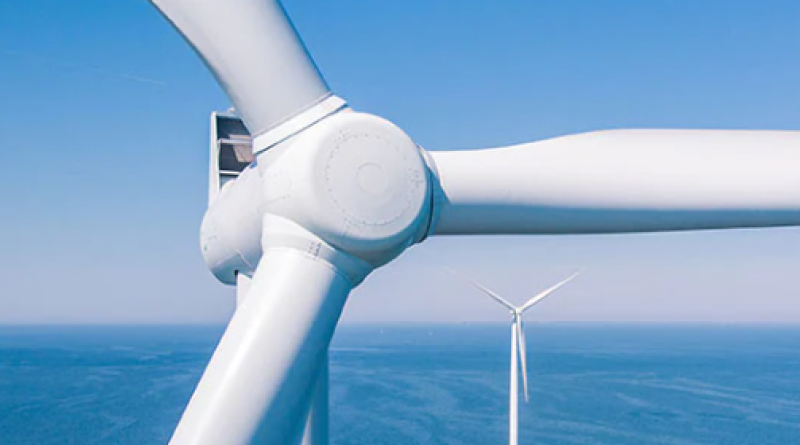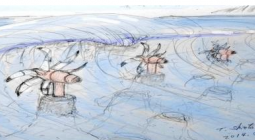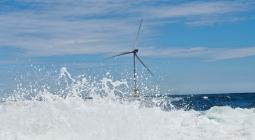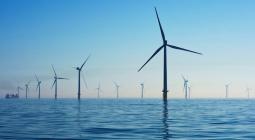Japan Inc. ups its game in offshore wind power

Japan Inc. is picking up its pace in developing offshore wind power projects to help meet the country's decarbonization targets for the decades to come.
The Ministry of Economy, Trade and Industry (METI) unveiled a series of measures aimed at streamlining and accelerating site selection processes after proposing in July to target a higher renewable proportion in Japan's power mix by 2030.
Among them are the Guidelines for Designation of Offshore Renewable Energy Power Facility Promotion Zones, which pave the way for the Japanese government to secure grid connections prior to auctions. The connections would be transferred to auction winners based on the policy design.
Experts at White & Case believe the measure can mitigate development risks in regions without incumbent players. "We do expect that development of Japan's offshore wind market will accelerate as a result of the policy incentives," the law firm's Tokyo-based counsel Kazuo Kasai told Net-Zero Business Daily.
The positive policy signals came after Tokyo vowed to develop 10 GW of offshore wind power by 2030 and 30-45 GW by 2040 last year. Now, an increasing number of domestic and foreign firms are showing an appetite for a Japanese offshore wind sector that could attract tens of billions of dollars in investments in the coming years.
On 12 August, Mainstream Renewable Power and Norway's Aker Offshore Wind said they were the frontrunner to acquire an initial 50% stake via a joint bid for Progression Energy's 800-MW Japanese floating offshore wind project. The project has yet to reach the Final Investment Decision.
PowerX announced in the same month that it would design and build an automated power transfer vessel to carry electricity from offshore wind farms to shore. Designed to have 100 grid batteries with a total storage capacity of 200 MWh, the 2,200-dwt ship is due to be launched in 2025.
Japan's Shimizu and the Netherlands' Heerema Group—two major contractors—have signed a cooperation agreement to target the Japanese offshore wind market. According to a statement 2 September, Heerema will support Shimizu with engineering and offshore construction expertise in areas including installing turbine foundations.
"The private sector will broadly benefit from developments in the Japanese offshore wind power space," said Tokyo-based White & Case partner Paul Harrison. "We certainly expect to see Japanese infrastructure development and manufacturing champions take a lead in this area, but the government has been clear about its commitment to attract both domestic and international investments, as well as to stimulate 'next-generation' technological development and international cooperation."
"At this stage we are seeing leading international sponsors forming business relationships with major domestic firms to develop competitive development plans to maximize their score in the auction process, by utilizing their experience in other countries," Harrison said.
"We expect that activity will continue and international players will increasingly target the Japanese market," he added.
Nascent market
With Japan's supply chain for wind farms still at an early stage of development, industry players observe abundant business opportunities for contractors, component makers, technology providers, engineering firms, and project developers alike.
"Japan is a nascent market and in the short-term will rely on external suppliers," IHS Markit Consulting Principal Melvin Leong said. "We have already seen foreign equipment makers try to make in-roads, and almost always with local partnerships."
"Being a technologically advanced country and steel-producing country, Japan does have the ability to establish its own supply chain quickly, and there may be incentives to do so, given the potential size of the market," he said.
While Japan is expected to bring online some fixed-bottom offshore wind projects in shallow waters initially, Leong pointed out that the country eventually will shift its focus to floating wind farms.
"Shallow water developments close to shore are the low-hanging fruit…These are most likely to be developed first as they cost less," Leong said. "[But] Japan has few shallow water areas available for development and water depth increases very quickly further from shore. As such, it is keen to 'leapfrog' into floating offshore wind farm development, which is more suitable for deeper water depths above 60 meters."
Japan-based Kansai Electric Power (KEPCO) and German utility RWE, which formed a partnership in the UK offshore wind business, recently announced they will jointly study the feasibility of a large-scale floating offshore wind project in Japanese waters.
"We see great potential for floating wind farms worldwide—but especially in countries with deeper coastal waters, like Japan," according to Sven Utermöhlen, chief operating officer for RWE Renewables' global offshore wind business.
According to the September Offshore Wind Industry Trends report by IHS Markit, the bulk of potential offshore wind resources is believed to be located further offshore in deeper waters, where winds are stronger and more consistent. There is estimated to be approximately 500 GW of untapped potential in Japan.
Wind power development
Under outgoing Prime Minister Yoshihide Suga, Japan set a goal of reducing its GHG emissions by 46% before 2030 compared with 2013 levels and reaching carbon-neutrality by 2050.
METI is proposing that renewable generation accounts for 36-38% of the electricity mix in 2030, compared with an existing goal of 22-24%. Figures from METI and the Renewable Energy Institute show renewable energy generation reached 49.5 TWh in the first quarter of 2021, or 19.6% of national power production. Wind power amounted to 5.4 TWh—so the room for growth is large.
"The Japanese government has provided ample subsidies for renewable development through the Feed-in-Tariff system, and will likely continue to do so in the future," IHS Markit Principal Research Analyst Kaori Tachibana said. "Unlike solar, where costs have come down significantly over the years, wind, especially offshore wind, is a new but important endeavor for Japan in order to meet its renewable target, therefore subsidy levels are more than adequate and are likely to continue for the time being."
Japan, the world's fifth-largest GHG emitter, launched two wind farm auctions in 2020.
In June 2021, a consortium of Toda, ENEOS, Osaka Gas, KEPCO, INPEX, and Chubu Electric Power won the rights to develop a 16.8-MW floating project off Goto City in Nagasaki Prefecture. Bidding for developing fixed-bottom projects in four wind zones, including three off the shores of Akita Prefecture, is still ongoing.
On 13 September, METI said it will launch an auction for another wind zone off Akita Prefecture. Local media reports suggested the area is sufficient for a 360-MW project.
IHS Markit estimates projects in the Noshiro, Yurinhonjo, and Choshi areas will add up to 1.4 GW to Japan's wind power capacity. Only 65 MW of offshore wind capacity was in operation in Japan at the end of 2020—but the Global Wind Energy Council forecasts that a total of 8.2 GW is likely to be online by 2030, of which 2 GW is expected to be from floating projects.
Still, White & Case's Kasai warned that the government needs to do more to meet long-term emissions targets. "The current number of projects at auction remains quite low…In our view, greater certainty and efficiency in the regulatory process is of utmost importance for market participants," he said.
Parallel to increasing its renewable energy output, Japan will also have to hike annual investments in the electrical grid from $7 billion today to $23 billion through 2030, McKinsey & Co. estimated.
"The government would need to directly invest in capacity expansion and clarify the cost split among power companies, renewables developers, and consumers," the consultancy said in a report published in April.
"Decarbonizing Japan will take significant investment, the reconfiguration of trade, and a reconception of industry focus," it added.
28 September 2021
IHS Markit




